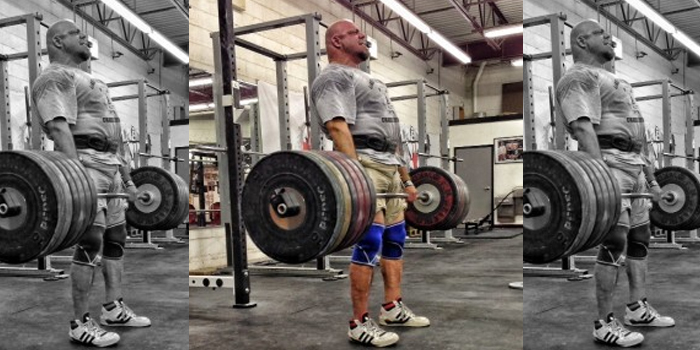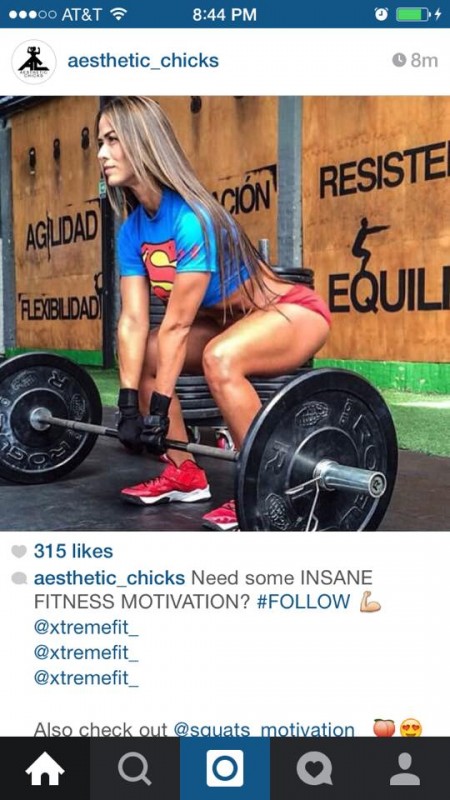
I figured while everyone else is out at the Arnold this weekend fan girling each other, or on the internet trying to book seminars based on their instagram popularity Stevey P would write a useful article from his vast experience and knowledge. Living, Learning and Passing on I believe they call it. In my many years of lending a coaching eye for people from beginners to pro level athletes I have learned a few things. For one, coaching the basics to people has done more to improve my own lifting technique because you get forced to analyze and always bring yourself back to basics the more you coach. Today I'm going to talk about the deadlift, mainly the one thing your momma told you never to do while deadlifting . . . no, it's not that you shouldn't run with scissors to the deadlift platform (although that's pretty death defying too) I'm talking about ROUNDING YOUR BACK! Noooooooooooo! Open up the pages of any mainstream, magazine stand, muscle rag and you will always see a deadlift article in there. Although it may actually be a good article, written by a well respected coach or lifter they almost always are accompanied by photos that the writer had no control over. You will see many variations of what some photographer thought was a “safe” version of what a deadlift should be and the photos are laughable. It's either some bloated up bodybuilder with gloves on bending over gripping the bar giving his best battle cry, war face to the camera in order to induce his version of intensity . . . or something. Then you have the fitness model chick, holding the bar all wrong, standing all wrong, half naked doing a pouty lipped start position wherein if she did actually apply any pressure onto the bar to really lift it she would most likely be hospitalized instantly.  But those aren't the worst things I see or hear when people write, coach or talk about the deadlift. It's the idea that the lifter MUST arch his or her back when starting the deadlift. Because it's the only safe way to do it. Now I do agree that an arch is needed for the start of olympic lifts and I think that's where a lot of newer lifters coming from the crossfit scene are getting things confused. A lot of them were pretty much taught to do cleans at the same time there were taught how to deadlift and to the untrained eye the start of both lifts looks the same to them. If a lifter can lift a weight they feel comfortable with using a arched back I will say, “Go ahead, knock yourself out, but if you want to lift bigger weight just let me know”. Let's break the arched back deadlift down, picture what happens here, the lifter squats down, arches the back, cranks the head up, pulls the shoulders back then starts to apply pressure to lift the bar holding that arch. The chest starts leading the lift and the initial pull, the shoulders are out in front of the bar and the pull is now being made with the weak muscles in the lower back instead of in the strong muscles in the legs and hips. The other thing the arch makes happen is it forces the hips farther away from the bar putting you in a bad mechanical position to really get the bar driving off of the floor. Let's look at the rounded back start. When I say “rounded back” I'm not talking about some geeked out, vertebrae cracking rainbow. I'm talking about a flat to slightly round back depending on the lifter. What is actually happening when you see a lifter's back rounding is his or her hips searching for a better mechanical position and that position is always going to be closer to the bar. When a back rounds it's actually your hips saying “You jackass, don't stick me way out here where I am weak and vulnerable”. It's also my theory (and I can only say it's my theory because I never attend seminars nor do I read the internet or books) that the back in the rounded position is stronger than the arched position and here is where I first started noticing this theory in action. The strongmen that train in my gym are frequently forced into round back positions during event training. stone, keg and sandbag lifting, tire flipping, conan's wheel, ETC all put a tremendous load on the back in a rounded position. I have watched strongmen at my gym who never trained their deadlift except to test it every three or four weeks and always made gains on their deads. The question that should always go along hand-in-hand with the flat back or rounded back set up dilemma is, “Stevey P, what's the deal with my head position?” Head position is DIRECTLY related with hip position. Get down in your best arched back deadlift start position with your head up looking straight ahead. Now let your back round slightly, let your shoulders droop forward a little and tilt your chin down until you are looking at the floor six feet ahead of you. Do all three of these things at the same time and feel what your hips are doing. They are coming in closer to the bar. A lot of times all I have to do is cue a lifter to tip their head down just a little bit and it changes the entire lift for them. Now am I prescribing looking down for EVERY lifter? Am I prescribing rounding the back of EVERY lifter? Absolutely not, what I'm doing is simply saying is don't just lay down and say “My deadlift sucks, sad face”. Just experiment around with the few slight variables I've discussed here, and don't let your back round a little if need be.
But those aren't the worst things I see or hear when people write, coach or talk about the deadlift. It's the idea that the lifter MUST arch his or her back when starting the deadlift. Because it's the only safe way to do it. Now I do agree that an arch is needed for the start of olympic lifts and I think that's where a lot of newer lifters coming from the crossfit scene are getting things confused. A lot of them were pretty much taught to do cleans at the same time there were taught how to deadlift and to the untrained eye the start of both lifts looks the same to them. If a lifter can lift a weight they feel comfortable with using a arched back I will say, “Go ahead, knock yourself out, but if you want to lift bigger weight just let me know”. Let's break the arched back deadlift down, picture what happens here, the lifter squats down, arches the back, cranks the head up, pulls the shoulders back then starts to apply pressure to lift the bar holding that arch. The chest starts leading the lift and the initial pull, the shoulders are out in front of the bar and the pull is now being made with the weak muscles in the lower back instead of in the strong muscles in the legs and hips. The other thing the arch makes happen is it forces the hips farther away from the bar putting you in a bad mechanical position to really get the bar driving off of the floor. Let's look at the rounded back start. When I say “rounded back” I'm not talking about some geeked out, vertebrae cracking rainbow. I'm talking about a flat to slightly round back depending on the lifter. What is actually happening when you see a lifter's back rounding is his or her hips searching for a better mechanical position and that position is always going to be closer to the bar. When a back rounds it's actually your hips saying “You jackass, don't stick me way out here where I am weak and vulnerable”. It's also my theory (and I can only say it's my theory because I never attend seminars nor do I read the internet or books) that the back in the rounded position is stronger than the arched position and here is where I first started noticing this theory in action. The strongmen that train in my gym are frequently forced into round back positions during event training. stone, keg and sandbag lifting, tire flipping, conan's wheel, ETC all put a tremendous load on the back in a rounded position. I have watched strongmen at my gym who never trained their deadlift except to test it every three or four weeks and always made gains on their deads. The question that should always go along hand-in-hand with the flat back or rounded back set up dilemma is, “Stevey P, what's the deal with my head position?” Head position is DIRECTLY related with hip position. Get down in your best arched back deadlift start position with your head up looking straight ahead. Now let your back round slightly, let your shoulders droop forward a little and tilt your chin down until you are looking at the floor six feet ahead of you. Do all three of these things at the same time and feel what your hips are doing. They are coming in closer to the bar. A lot of times all I have to do is cue a lifter to tip their head down just a little bit and it changes the entire lift for them. Now am I prescribing looking down for EVERY lifter? Am I prescribing rounding the back of EVERY lifter? Absolutely not, what I'm doing is simply saying is don't just lay down and say “My deadlift sucks, sad face”. Just experiment around with the few slight variables I've discussed here, and don't let your back round a little if need be.









1 Comment